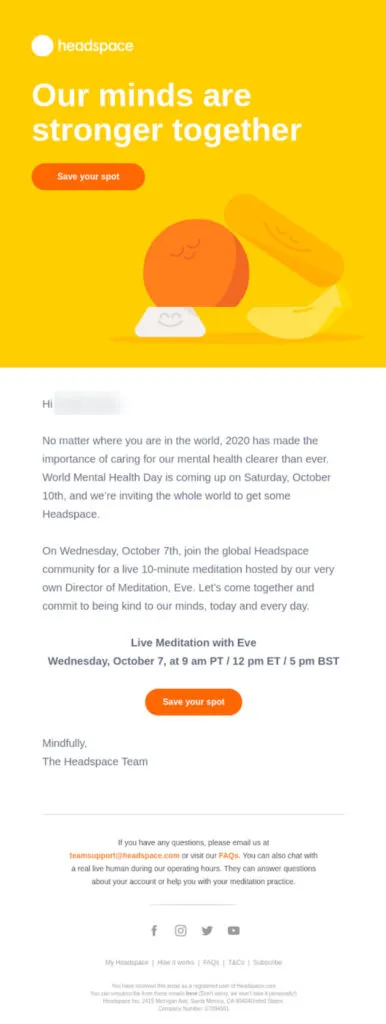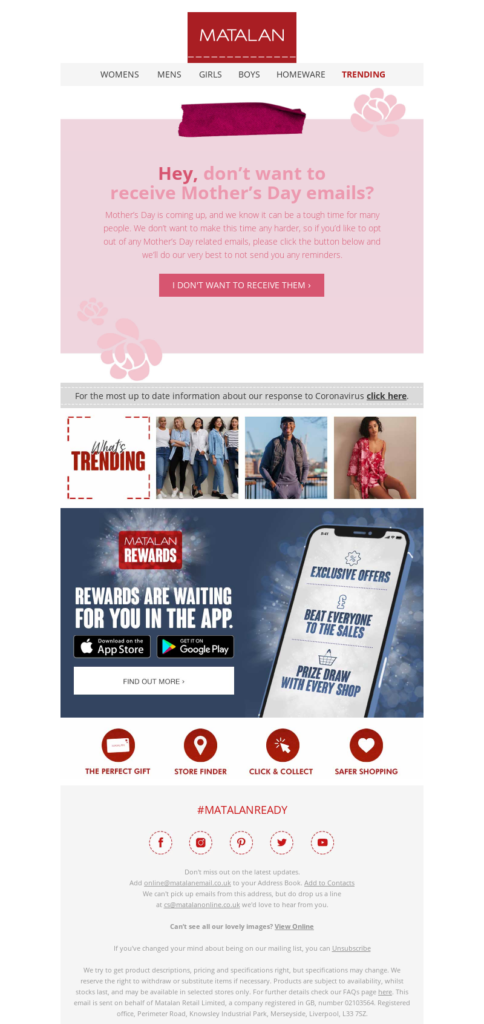
The world has been faced with a litany of challenges since the onset of COVID-19. Now, more than two years later, the pandemic lingers, environmental concerns loom large, rising inflation impacts our daily lives, and the war in Ukraine rages on.
These crises present brands and marketers with great uncertainty and have revealed important lessons about achieving a balance between commercialism and empathy in marketing communications.
Unsurprisingly, global or national turbulence often correlates with significant changes in how consumers perceive brands, as well as how—and where—they spend their dollars. A growing number of consumers are embracing social causes and shifting their purchase patterns toward companies that align with their values.
This concept is not new and is not a trend—it’s called conscious consumerism. Let’s dive deeper into this topic and explore key tactics email marketers can use to win over the conscious consumer.
What is conscious consumerism?
Conscious consumerism refers to the ways individuals use their purchasing power for social, environmental, or economic good.
An overwhelming number of today’s consumers (especially Millennials and Gen Z) expect brands to take a stance on social issues, so it’s essential for brands to incorporate purpose-over-purchase communication strategies into their email programs. Simply pandering to an audience with buzzwords or using a hot-button issue to push sales won’t cut it. To be a successful email marketer in 2022, brands must identify their core values and communicate with audiences in an authentic, relevant, and empathetic manner. If brands fail in this endeavor, they not only risk damaging their reputation and ROI, but also their deliverability.
As outlined in the State of Email 2022 report from Validity, senders who failed to adopt the appropriate tone in email communications saw higher spam complaint rates and unsubscribes in 2021. These negative engagement metrics are measured by mailbox providers and result in senders being unable to reach their subscribers’ inboxes. Perhaps more importantly, if subscribers find a brand’s email messages flippant or irrelevant, it could do irreparable harm to their business in the long term.
Key empathetic marketing tactics
How can senders adapt their strategy and embrace more empathetic, solutions-oriented marketing? Let’s review a couple of key tactics and best-in-class examples:
1. Be transparent about your values
In our current email landscape, transparency is key. Faced with an immeasurable amount of information from social media and news networks, it’s difficult for consumers to distinguish fact from fiction. It’s critical for senders to proactively communicate their point of view on key issues and allow their audience to form opinions based on direct communication.
Travel operators and airlines have grappled with managing environmental impact communications for years. It’s no secret that the travel industry contributes significantly to carbon emissions, and consumers are aware of the impact their purchases and choices have on the world around them. In fact, a recent study found that nearly 1 in 3 consumers stopped purchasing from certain brands because of sustainability concerns.
Wizz Air avoids making the sometimes-vague sustainability claims that so many other companies have been scrutinized for. In this letter from the CEO, Wizz Air leverages the email channel to clearly articulate their green ethos and outlines the steps taken to reduce their ecological impact.
2. Prioritize authenticity
Taking an authentic approach to email marketing communications helps senders build trust and loyalty within their subscriber base.
Amid a myriad of recent crises, senders have struggled to share content that is both A: true to their core values, and B: written in the appropriate tone. To succeed in finding this balance, it’s important to remember the primary goal of an email campaign is not always to sell or promote, but to connect your subscribers with goods or services that are truly valuable.
Headspace executes this perfectly in the email below. By acknowledging mental health needs associated with pandemic-induced isolation and providing engaging content without a “Buy Now” CTA, they succeed in providing value, expressing empathy, and remaining true to their core business objectives.
3. Unite with your partners and community
Togetherness has been a common theme for email communications in recent years. Today, we continue to see community-based messaging focused on the war in Ukraine. Brands are working to create a sense of community between themselves and their consumers by leveraging partnerships that reiterate their values.
In the example below, Intrepid acknowledges the crisis in Ukraine and appeals to their audience for donations. They’ve taken the opportunity to share their partnership with and support for the Red Cross, noting that donations are welcomed if the subscriber is in a position to donate.
Intrepid has long operated travel tours in both Ukraine and Russia and has employees working in areas impacted by the war. Given their unique position in the industry and commitment to safe tourism, the communication feels highly authentic and relevant. So far, this partnership has helped raise $143,844 in humanitarian support and relief for people and communities impacted by the crisis!
4. Personalize your communications
These days, personalization is about much more than plugging a subscriber’s name into a template. In 2022, brands must deliver data-driven, relevant, and individualized experiences. Effectively personalized programs reap the benefits of improved subscriber satisfaction and may even see a 5.2x lift in retention.
Take these opt-out messages from Etsy (Valentine’s Day) and Matalan UK (Mother’s Day), for example. These emails allow subscribers to remove themselves from holiday-specific email communications without having to unsubscribe from the entire email program.
This is a deeply considerate approach to personalization. Understanding the collective grief that has touched each one of us and incorporating these customization techniques will ultimately help to build a stronger bond between brand and consumer.
5. Get comfortable with change
If we’ve learned anything since March of 2020, it’s that companies must be ready to pivot and change. For senders, any business changes need to be clearly communicated to audiences in a timely and compassionate manner. Throughout the pandemic, smart senders took the opportunity to remind subscribers of their value and prepare them for unordinary scenarios.
In this example, Vetsource reiterates their goal to keep pets happy and healthy while reminding subscribers to plan ahead during the busy holiday season. They offer practical steps to address any shipping or carrier delays and highlight their customer account portal, where patients can confirm and update their personal details. They avoid the doom and gloom of shipping delay notifications and instead frame their messaging as helpful, time sensitive, and focused on well-being.
Conclusion
Today’s consumers are informed, intelligent, and choosing to align themselves with brands who value authenticity over buzzwords—and empathy over a sales pitch. To win them over, be sure to incorporate these key tactics into your email marketing strategy.
To learn more about the steps you can take as an email marketer to appeal to today’s consumers, check out our infographic, Bridging the Reporting Metrics Gap.





